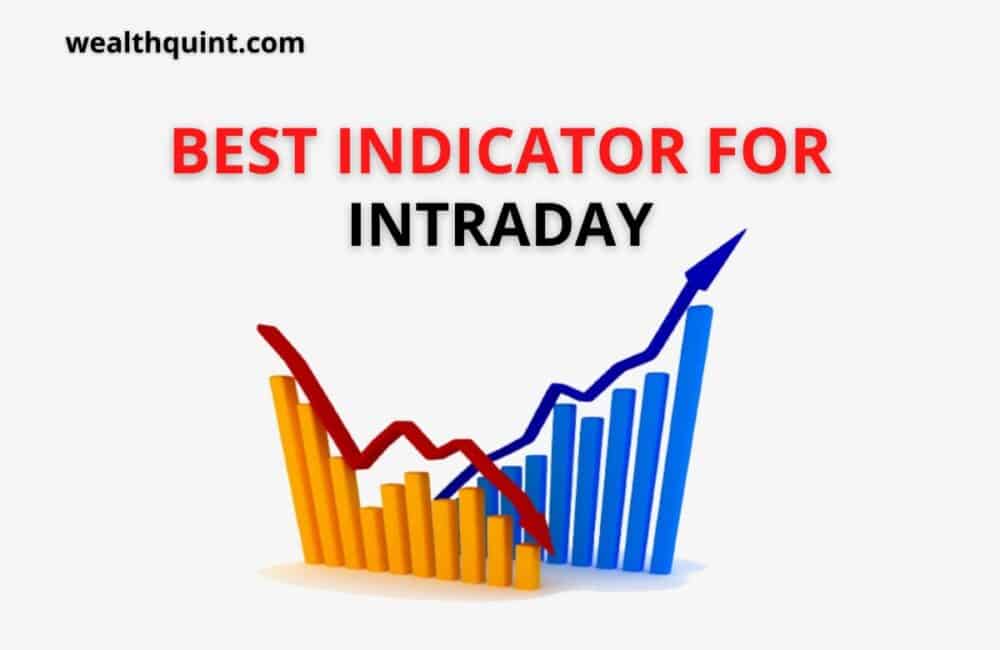Intraday indicators let the trader find out the trading openings in the orientation of the existing market trend.
In stock market trading, to make a decision, one needs to rely on the patterns and indicators that he collects by analyzing different charts.
So, Whether you are an experienced trader or beginner, indicators play a key role in analyzing the market. That is why to help you out, in this article we will discuss some useful Intraday Indicators.
In the case of Intraday trading, traders buy and sell stocks on the same day, and in this type of trading, traders do not buy shares for investment purposes, they tread to gain profits with the advantage of varying stock indices.
You can think this is impressive, but one needs to know that it’s risky too, as the stock market is dynamic and volatile enough. That is why as a trader, especially if you are a beginner, understanding the basics of intraday indicators is a must for you, as it will help you to avoid loss and gain maximum profit. Also, these indicators assist you to understand the direction of market trends.
How Do Intraday Indicators Help A Trader?
In simple words, these indicators help the trader to gain more profit by providing useful data regarding the market.
It provides information about the direction of market trend, momentum present in the investment market, the Profit potential of a particular stock, and many more other aspects.
Also Read: When is Intraday Profit Credited?
Best And Most Useful Intraday Indicators
1. Moving Averages
Amongst all the intraday trading indicators Moving Averages is one of the most frequently used ones. This indicator assists the trader to recognize the momentum of the market and the market’s trend.
Also, along with that, it helps by providing data regarding, the reversal of trends, and the stop loss and stop-loss points. In simple words in this moving average procedure, over a certain period, the average closing rates are positioned on a row on the stock chart.
And, the periodic longevity of the stock movement reflects the trustworthiness of the moving averages.
2. Momentum Oscillators
Due to the volatile nature of the market, the prices of the stocks are constantly fluctuating. As an intraday indicator, Momentum Oscillators assist to understand whether the market sentiments are going through any transformations or not.
Sometimes, the stock market undergoes a short-period term, despite it not being bullish or bearish. In these instances, A momentum oscillator guides traders to recognize such outlines.
3. Relative Strength Index
Relative Strength Index or RSI is one of the most useful intraday indicators that indicates the momentum of the market and traders take its help to correlate the share prices losses or gains.
This intraday indicator is a solo line varying from 0 to 100 and it reflects whether the stock is over purchased or oversold in the market. On this scale reading below 30, implies this is an oversold market and if the reading is above 70, it indicates an overbought market.
Relative Strength Index also guides in the calculation of market trends, if the value is above 50, then it’s an uptrend market and for the value below 50, it is a downtrend market.
4. Bollinger Bands
You could say that Bollinger Bands are a refined version of Moving Average. This intraday indicator predicts the instability in the market. There are three types of Bollinger Bands,
- A middle band that is a 20-day judgment moving average,
- A+2 standard divergence upper band.
- A -2 lower divergence lower band.
In this pointer, over a certain period, the average closing rates, the upper limit, and the lower limit are positioned on 3 different rows on the stock chart. The stock price shiftings between the upper and the lower band.
The bands broaden when the fluctuation is more and the market is moving. Similarly, when there is less volatility, the bands become narrow. This intraday indicator assists the traders to realize the value of a specific stock.
5. Moving Average Convergence Divergence (MACD):
MACD is one of the most helpful and trusted intraday indicators for momentum traders. This indicator emerges on the convergence and divergence of two shifting averages.
MACD provides information regarding trend direction, momentum, and duration. Positive values in this indicator imply an upward trend and a negative value indicates a downward trend.
6. Commodity Channel Index(CCI)
The commodity channel index is useful to identify the new trend in the market. Its values are ranging from 0 to -100 and +100. The negative value of CCI indicates a downtrend market whereas the positive value of this indicator indicates an uptrend market. Together CCI and RSI help to collect data regarding overbought and oversold stocks.
7. Stochastic Oscillator
The Stochastic Oscillator is one of the momentum intraday indicators and this is also a useful one. It helps to estimate and compare the closing price of a stock to a span of costs over some time.
So this was the list of some most important intraday trading indicators. Hope the article helped you to understand the stock market a little more and also provide a clear vision regarding the intraday indicators.
Recommended:
Demat Account: Benefits, Aims And Objectives



